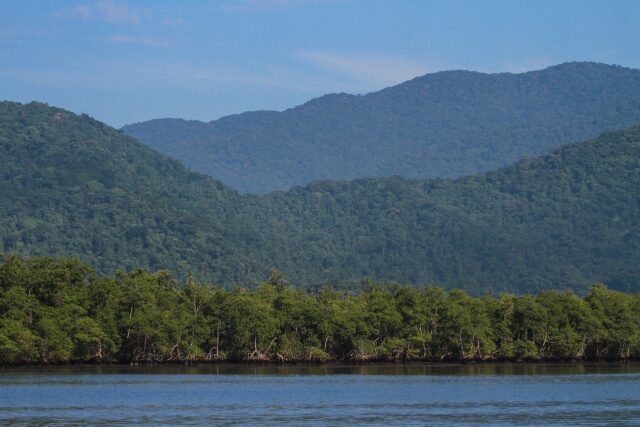European countries’ recognition of Palestine deepens Israeli isolation
JERUSALEM — Already under global pressure over the mounting toll from the war in Gaza, Israel slipped further into international isolation on Wednesday after three European countries broke with their main European Union partners and decided to recognize a Palestinian state.
The move, described by an Israeli government spokesperson as “obscene,” will have little practical impact either in the ruins of Gaza or the occupied West Bank. Squeezed by Israel, the cash-strapped Palestinian Authority in the West Bank struggles to pay its own civil servants.
But it follows a steady build-up of problems, from Washington’s warnings over withholding arms if the war in Gaza continues and sanctions against violent settlers to accusations of genocide before the International Court of Justice (ICJ) and a possible arrest warrant for Prime Minister Benjamin Netanyahu from the International Criminal Court (ICC).
Mr. Netanyahu has long resisted the so-called two-state solution and his resistance has increased since he went into government with a clutch of hard right religious nationalist parties at the end of 2022.
His government remains deeply suspicious of the Palestinian Authority, set up three decades ago under the Oslo interim peace accords, accusing it of hostile actions from paying the families of armed militants killed by Israeli forces to encouraging antisemitism in schoolbooks.
Mr. Netanyahu himself described the decision by the three countries as “a reward for terrorism,” and said a Palestinian state would “try to repeat the massacre of Oct. 7 again and again.”
That comment underlined how bitter the climate surrounding the war in Gaza has become and how distant the prospects of a political settlement based on an independent Palestinian state existing alongside Israel now appear, with peace talks seemingly hopelessly blocked.
As well as recalling its ambassadors from Oslo, Madrid and Dublin, the foreign ministry summoned the Norwegian, Irish and Spanish ambassadors in Israel to be shown video footage of the attack on Israel by Hamas-led gunmen on Oct. 7.
Laura Blumenfeld, a Middle East analyst at the Johns Hopkins School for Advanced International Studies in Washington, said the three countries’ decision was “diplomatically bold but emotionally tone deaf and unproductive.”
“For Israelis it will increase paranoia, reinforcing Netanyahu’s argument that Israelis stand alone,” she said. “For Palestinians, it falsely raises expectations, without defining a pathway toward realizing legitimate national dreams.”
LONGER TERM PRICE
For Mr. Netanyahu, struggling to hold together a fractious wartime coalition and widely blamed in Israel for the disaster of Oct. 7, Wednesday’s announcement may provide a temporary lift, by reinforcing an image of defiance in the face of a hostile world.
“This really strengthens the narrative which we have been hearing since Day One of this war that in the end, we can only depend on ourselves,” said Yonatan Freeman, an international relations specialist from the Hebrew University of Jerusalem. “And I think that this can even assist the Israeli government’s explanation and description of what it’s doing in this war.”
However, the longer term price to Israel of standing in the way of moves towards a Palestinian state may be heavier, starting with the prized goal of normalized relations with Saudi Arabia, Netanyahu’s top foreign policy goal before the attack.
Appearing before a Senate committee on Tuesday, US Secretary of State Antony Blinken said that for an agreement to be reached with Saudi Arabia, there would have to be calm in Gaza and a “credible pathway” towards a Palestinian state.
“And it may well be…that, in this moment, Israel is not able or willing to proceed down that pathway,” he added.
For Israelis, the images of Oct. 7, when Hamas-led gunmen rampaged through communities around the Gaza Strip, killing around 1,200 people and taking some 250 hostages into captivity, remain deeply traumatic.
But outside Israel, the images of the suffering in Gaza, where the relentless Israeli campaign launched in response has killed more than 35,000 Palestinians and destroyed much of the heavily built-up enclave, have helped fuel an expanding protest movement on US college campuses and the streets of European cities.
For both the US administration and other governments like Germany that have traditionally been friendly to Israel, the often-angry protests have imposed an increasingly heavy political cost.
Both countries say recognizing a Palestinian state must be the result of negotiations rather than unilateral declarations, and other major European countries like France and Britain also declined to join the trio granting recognition.
But for Alon Liel, a former director general of Israel’s foreign ministry and a critic of Netanyahu’s government, the recognition of Palestine by individual countries was less important than the broader context, including cases against Israel and its leaders at the international tribunals in the Hague.
“If it’s part of a wider move that’s triggering momentum and part of the ICC, ICJ moves, sanctions on settlers and so on, there’s a chance that Israel will notice that the world exists,” he said. — Reuters














